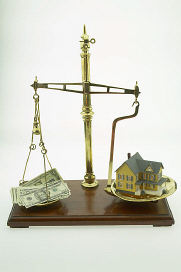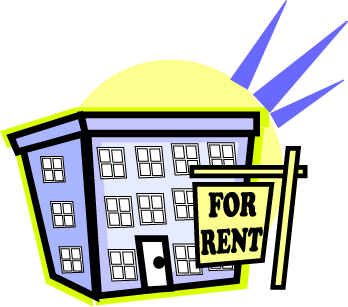
No one knows what the future holds for you, your family, your job or your finances. But Bankrate.com can help you understand what you’re going to encounter when you embark on the sometimes-difficult journey toward the American Dream of owning a home.
When you get that urge to buy a house, the first thing to do is step back and ask whether it makes more sense to keep renting for a while. If you still want to buy, you need to figure out how much house you can afford. Here’s what they have to say…
Economic differences between renting and owning
If you’re looking for the best return on your money, historically you’re better off investing in the stock market than buying a house. Primary homes generally don’t earn the investment return of financial instruments such as mutual funds. While the stock market’s long-term average rate of return is in the range of 8 percent to 10 percent, housing historically has appreciated on average in the low- to mid-single digits. Don’t buy solely for investment gain.
On the other hand, Uncle Sam helps out by letting taxpayers deduct part of the mortgage interest and real estate taxes each year. Borrowers get the benefit only if they pay enough in one year to exceed the standard deduction. But that usually happens, especially during the first few years of a mortgage when most of each payment goes toward interest rather than principal.
Sunny side of homeownership
Owners enjoy other benefits, too. They build equity over time as home values rise and their mortgage balances shrink. They also don’t have to worry about their housing costs shooting through the roof because lenders can’t boost borrowers’ rates and payments, unless those borrowers have adjustable-rate mortgages.
Cloudy side of homeownership
When something breaks at an apartment, it’s the landlord’s problem. When it’s your name on the deed, the problem is yours. If you throw every penny into a down payment, you’re taking a big risk because you may not have enough money left to fix leaky pipes or buy a new air conditioner.
Potential buyers might want to hold off for other reasons. If there’s a good chance that you will be laid off soon, you might want to wait. The same goes for people who plan to leave a job soon. The monthly payment isn’t the only obstacle for this kind of customer. Closing costs and other home-buying fees, as well as the commission that most owners end up paying to real estate agents when they sell their homes, add up. People who have to sell after living in one place for only a short time can end up in the hole on their investments.
Explore all the options
Some middle-ground approaches to homeownership blend elements of buying and renting. Some of the more popular loan types are seller financing, “lease with an option to buy” and “contract for a deed” plans
Seller financing
With seller financing, the seller actually assists the buyer in purchasing the home, by “lending” the buyer either a portion of the amount to be financed or the entire amount.
Let’s say the buyer and seller agree on a price of $150,000 for the house. In many cases a lending institution would require a 20-percent down payment — $30,000 — and give the buyer a mortgage for $120,000. But if the buyer has only $15,000 cash, the seller could “take back” a second mortgage for the $15,000 the buyer is short. The buyer makes payments on the first loan to the bank and the second loan to the seller.
Another example of seller financing: If the sale price of the home is $150,000 and the buyer has only $15,000 for a down payment, the buyer gives the $15,000 down payment directly to the seller who agrees to carry the entire mortgage amount of $135,000. The buyer would make all payments directly to the seller.
Pro: Seller financing reduces the cash needed to get into a home and could dramatically reduce closing costs. Often the seller will be more flexible in accepting an underqualified buyer.
Con: The seller determines the interest rate for that portion of the mortgage being carried, and it usually comes with a higher rate and a shorter term. Perhaps most importantly, it very often comes with a balloon payment. This means that monthly payments would be computed as though the mortgage was to continue for, say, 30 years, but at the end of five or 10 years the entire remaining balance has to be paid in one lump sum. That normally requires refinancing at that point, when rates could either be lower, higher or about the same, or selling the house to meet that balloon payment. Story





 Adjustable or floating rate, 15-year or 30? How much mortgage can you afford? These are just a few of the many questions home buyers will find information on in
Adjustable or floating rate, 15-year or 30? How much mortgage can you afford? These are just a few of the many questions home buyers will find information on in 